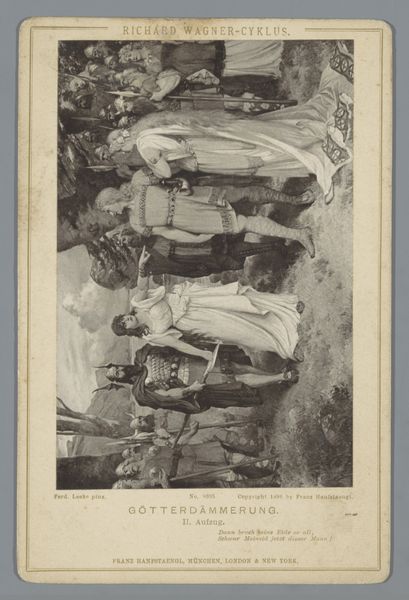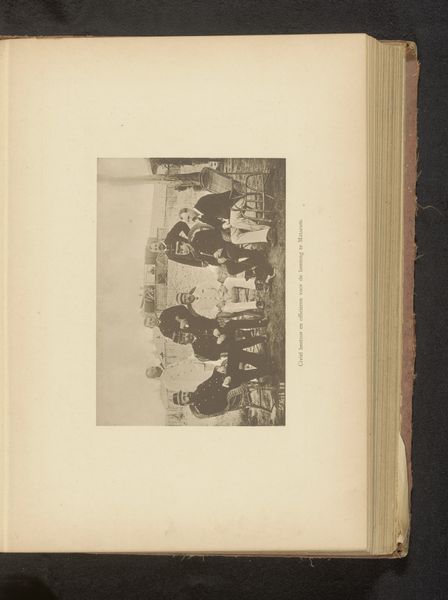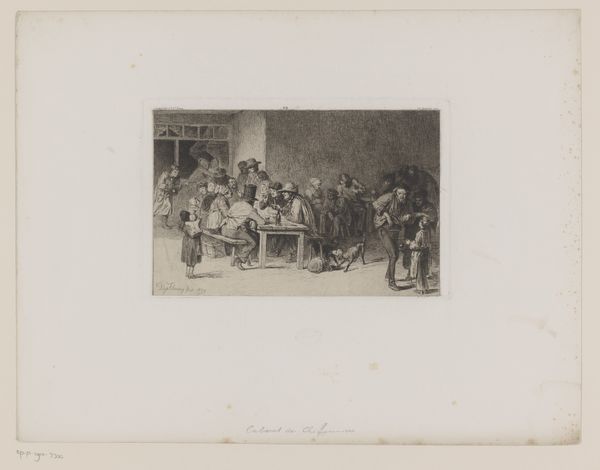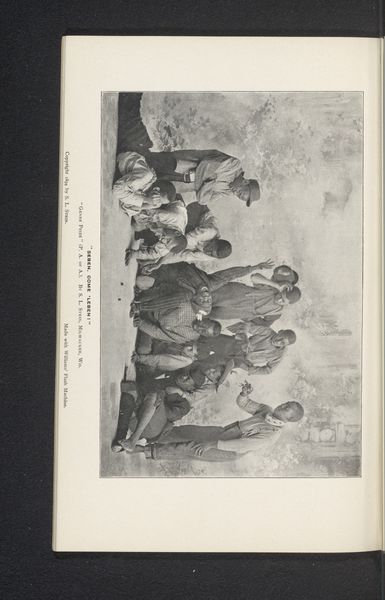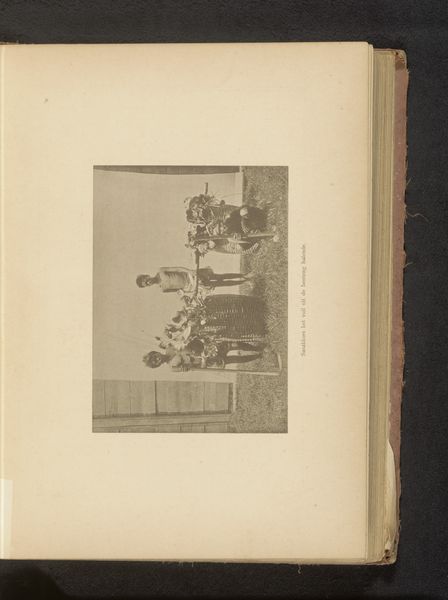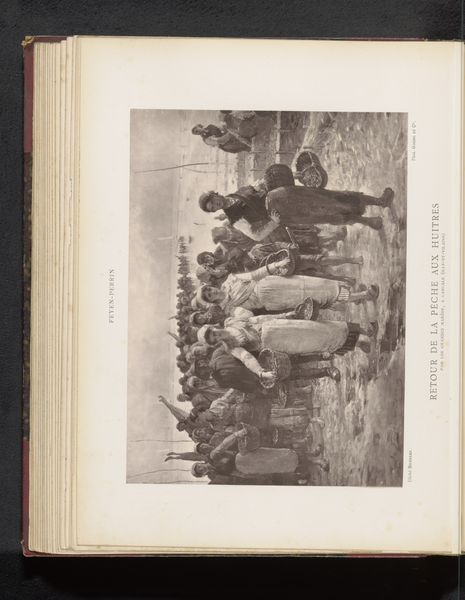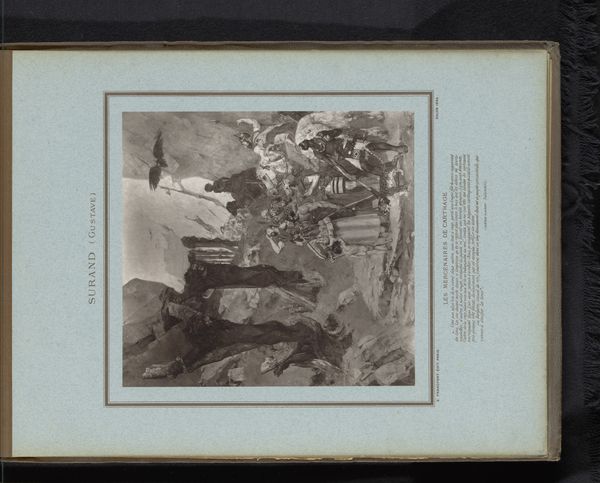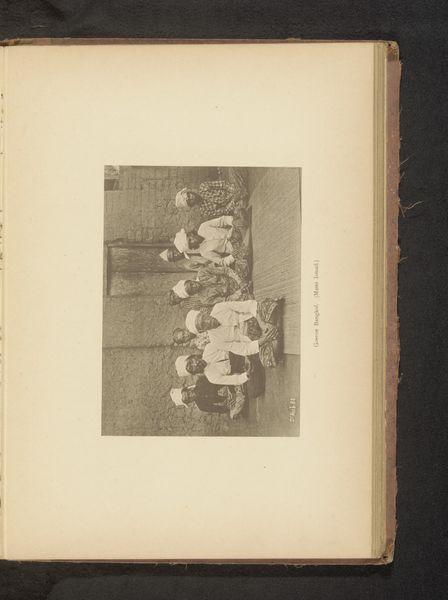
Groepsportret met prinses Wilhelmina en koningin Emma op familiebezoek in Duitsland 1895
0:00
0:00
photography
#
portrait
#
photography
#
genre-painting
#
realism
Dimensions: height 64 mm, width 102 mm
Copyright: Rijks Museum: Open Domain
Editor: This is a photograph titled "Groepsportret met prinses Wilhelmina en koningin Emma op familiebezoek in Duitsland," taken in 1895 by Fokko Gillot. It's a fascinating glimpse into royal life, but there's something a little stiff about it, maybe because it's a formal family portrait. What do you see in this piece? Curator: Absolutely. Gillot’s photograph, beyond its seemingly straightforward depiction of royalty, offers a lens through which to examine power, gender, and representation. The figures, posed in this formal setting, perform their roles within a strict social hierarchy. How might we interpret the act of photographing Wilhelmina and Emma as a tool for reinforcing dynastic power, especially in a period marked by evolving social norms? Editor: That’s interesting, I hadn’t thought of it in terms of actively reinforcing power. So the photo isn’t just a snapshot, but a statement? Curator: Precisely. Think about the historical context. The late 19th century was a period of significant social and political upheaval, including burgeoning feminist movements. The deliberate presentation of Wilhelmina, and especially Emma who acted as regent for her daughter, projects an image of strength and stability during a time of considerable change and growing social awareness. What does the choice of clothing communicate, especially regarding the female figures versus the men in military dress? Editor: I see what you mean. The elaborate white dresses of the women stand in stark contrast to the dark military uniforms, really emphasizing a difference, maybe even a separation of power. This makes you wonder how much agency they had in constructing their image. Curator: Exactly. It encourages a deconstruction of the image. Gillot's work allows us to examine how visual media was – and continues to be – deployed in shaping perceptions of identity, authority, and national identity. Editor: I will never look at a family portrait the same way again! This really gave me so much food for thought. Curator: And that's precisely the point. Engaging with art from a critical, intersectional perspective can illuminate hidden narratives and challenge conventional readings of history.
Comments
No comments
Be the first to comment and join the conversation on the ultimate creative platform.
